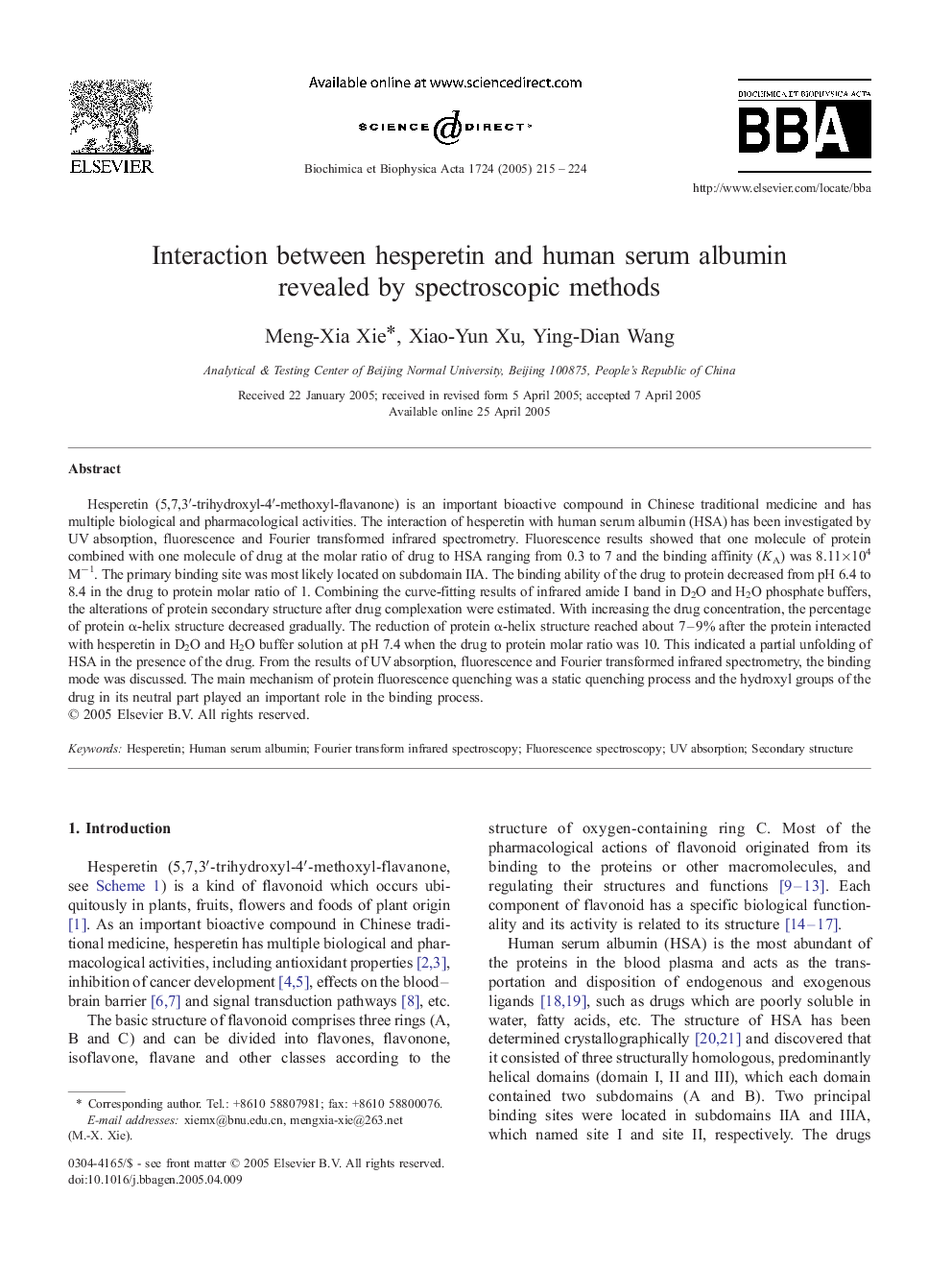| Article ID | Journal | Published Year | Pages | File Type |
|---|---|---|---|---|
| 9886111 | Biochimica et Biophysica Acta (BBA) - General Subjects | 2005 | 10 Pages |
Abstract
Hesperetin (5,7,3â²-trihydroxyl-4â²-methoxyl-flavanone) is an important bioactive compound in Chinese traditional medicine and has multiple biological and pharmacological activities. The interaction of hesperetin with human serum albumin (HSA) has been investigated by UV absorption, fluorescence and Fourier transformed infrared spectrometry. Fluorescence results showed that one molecule of protein combined with one molecule of drug at the molar ratio of drug to HSA ranging from 0.3 to 7 and the binding affinity (KA) was 8.11 Ã 104 Mâ1. The primary binding site was most likely located on subdomain IIA. The binding ability of the drug to protein decreased from pH 6.4 to 8.4 in the drug to protein molar ratio of 1. Combining the curve-fitting results of infrared amide I band in D2O and H2O phosphate buffers, the alterations of protein secondary structure after drug complexation were estimated. With increasing the drug concentration, the percentage of protein α-helix structure decreased gradually. The reduction of protein α-helix structure reached about 7-9% after the protein interacted with hesperetin in D2O and H2O buffer solution at pH 7.4 when the drug to protein molar ratio was 10. This indicated a partial unfolding of HSA in the presence of the drug. From the results of UV absorption, fluorescence and Fourier transformed infrared spectrometry, the binding mode was discussed. The main mechanism of protein fluorescence quenching was a static quenching process and the hydroxyl groups of the drug in its neutral part played an important role in the binding process.
Keywords
Related Topics
Life Sciences
Biochemistry, Genetics and Molecular Biology
Biochemistry
Authors
Meng-Xia Xie, Xiao-Yun Xu, Ying-Dian Wang,
